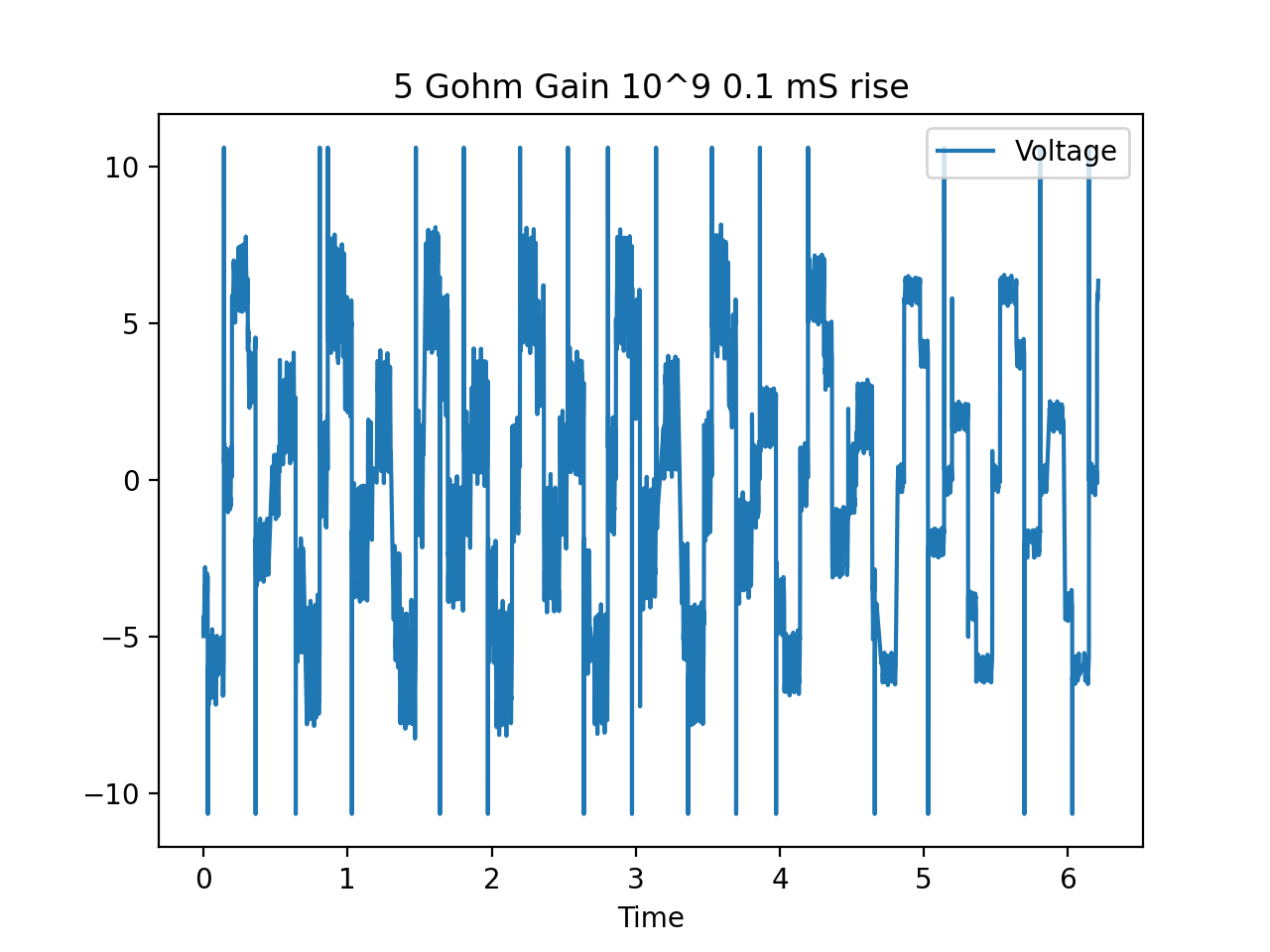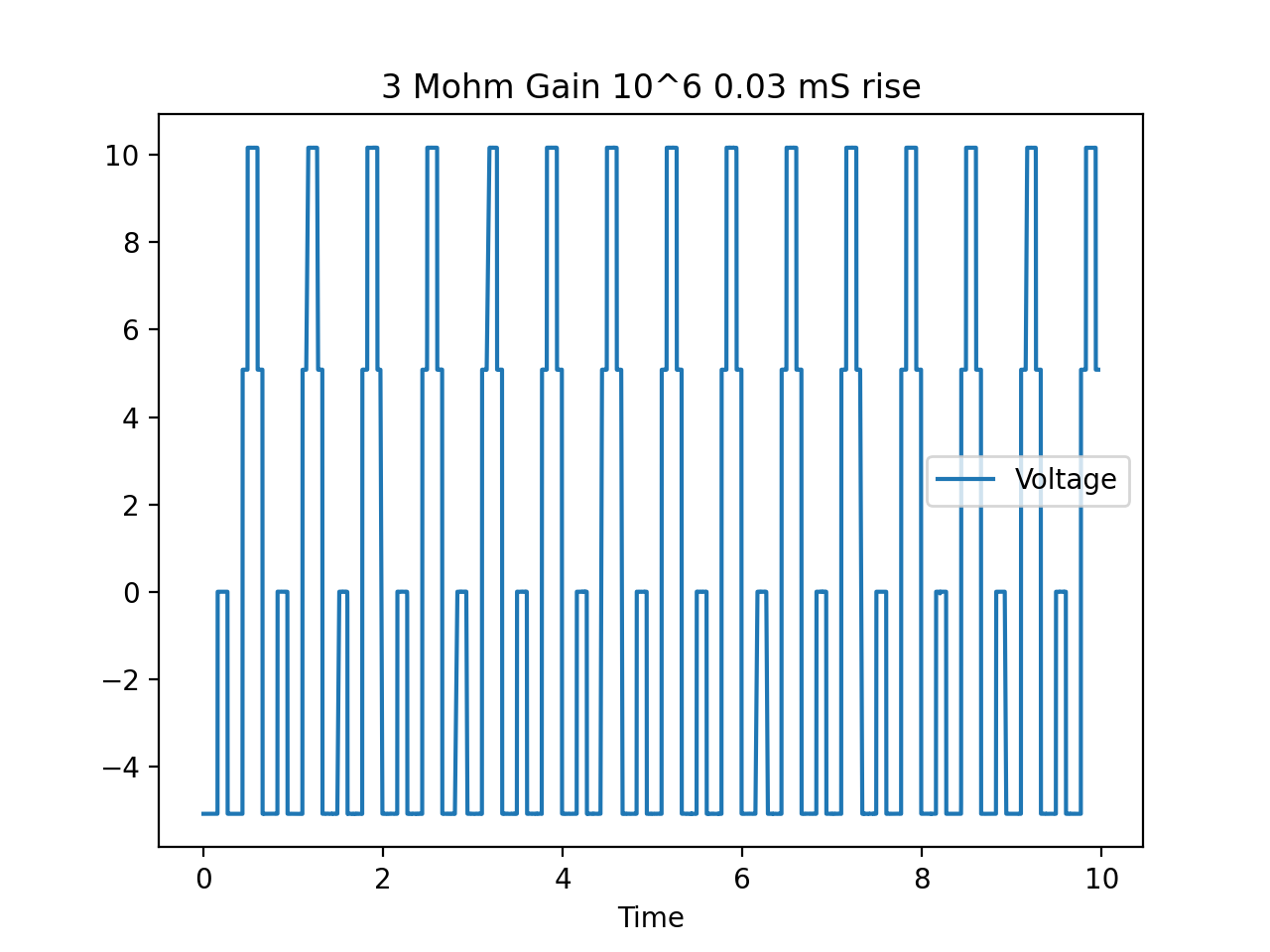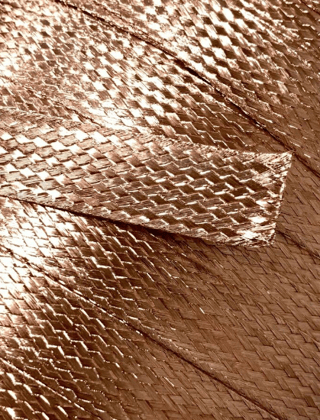I have a ribbon cable that is carrying four signals (each about 5V in amplitude and 1-2 Hz) and a ground wire between a DAC and four op amps.
The op amp outputs are amplifying the signals to 30 V and dropping across really substantial 5 Gohm resistors.
Because the load is so big, I'm using a current multiplier (model Keithley 427) to check that the current is following the voltage in the resistor. The output is fairly noisy as you can see in the attached image.  The weird thing is, the noise on the output of the current amp is reduced if I press on the ribbon cable that's carrying the signals from the DAC to the op amps. In the last plot, you can see the noise is a lot less around the 4.5 s mark where I start pressing on the cable.
The weird thing is, the noise on the output of the current amp is reduced if I press on the ribbon cable that's carrying the signals from the DAC to the op amps. In the last plot, you can see the noise is a lot less around the 4.5 s mark where I start pressing on the cable.
The noise is barely there for smaller loads as you can see in this picture of the current multiplier output for a 3 Mohm load 
The ribbon cable is unshielded, so I thought it was possible by pressing the cable onto the metal table, I was blocking some interference or capacitive effect between the wires or from the environmental noise. I tried adding some homemade shielding by wrapping the cable in aluminum foil and electrical tape and grounding one end of the foil, but it didn't produce a noticeable difference.
The wires are quite thin (AWG 28 I believe). I have heard some people say that for high frequency AC, you should place a ground wire between each signal on the ribbon cable, but I'm not sure it would do anything for signals in the 1-10 Hz range. I'm quite sure that the connections between the wire ends and their anchor points are solid.
Any ideas you have for why putting pressure on a ribbon cable would reduce current noise for small currents would be greatly appreciated.

